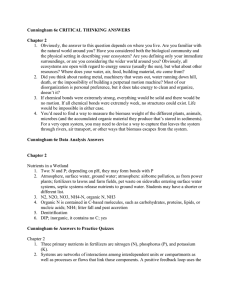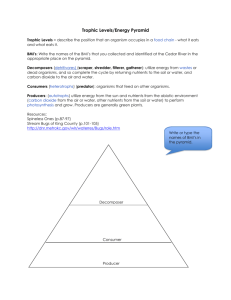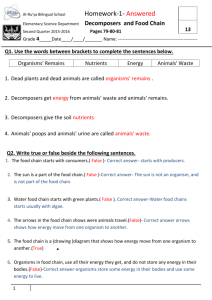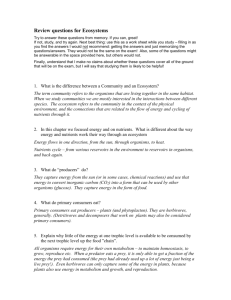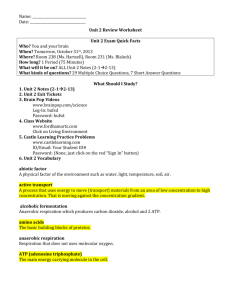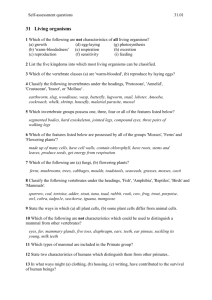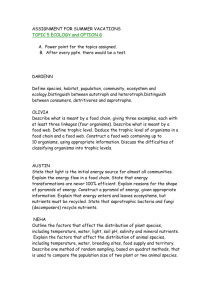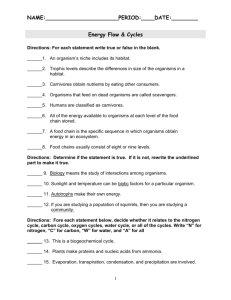Energy Flow in Ecosystems: The Importance of Light
advertisement
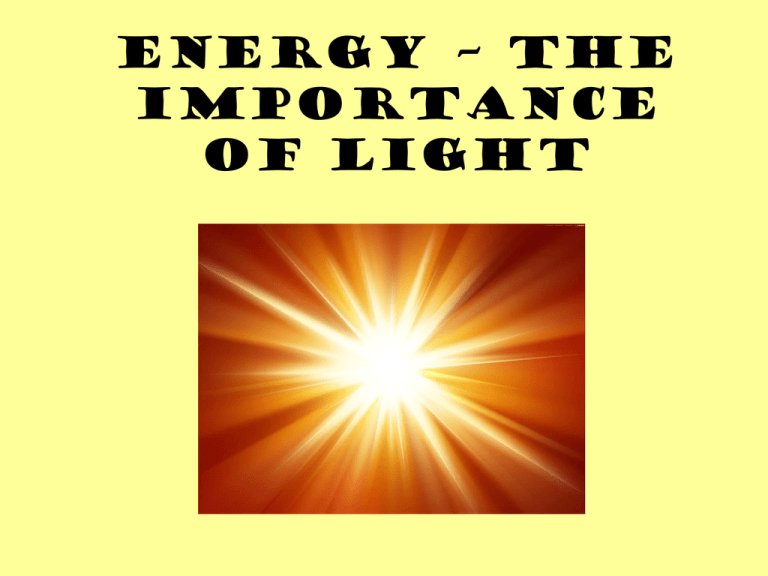
Energy – The Importance of Light REVIEW Producers are the most important part of a food chain because without them the next trophic levels would have nothing to eat Since producers synthesize their own food using light from the sun, sunlight is the initial energy source for almost all communities Energy Flow • Energy is transferred from one organism to the next when carbs, lipids, and proteins are digested • Consumers use the energy they obtain for cellular respiration and the byproduct of heat is lost to the environment Energy Flow • No organisms can utilize 100% of the energy from the food they eat, instead they use 10-20% and they lose about 80-90% Why is the energy flow so inefficient? • Not all parts of organism is eaten as a food source • Not all food swallowed can be digested and absorbed • Some organisms die before being eaten • Byproduct of cell respiration is heat loss – The more you move the more food required – Birds and mammals need to eat more to maintain body temperature Pyramids of Energy • Pyramid of energy – a graphical representation of the amount of energy that flows from one trophic level to the next in a community • Pyramids of energy must always take this shape because energy is transferred inefficiently The units used are kilojoules per square meter per year kJ m-2 yr-1 Energy & Nutrients • Sunlight fuels food chains and heat energy is lost through food chains via cellular respiration….therefore, energy enters as light and exits as heat but as long as the sun shines, ecosystems can use up and lose energy this way • BUT…Nutrients (organic molecules) on Earth must be recycled! How is this possible? How are Nutrients Recycled? • An effective way of “unlocking” organic molecules that have been stored away in organisms cells is DECAY • Decomposers break down dead organisms: – Saprotrophs (bacteria and fungi) recycle nutrients by breaking down organic molecules – Decomposers play a major role in soil formation
